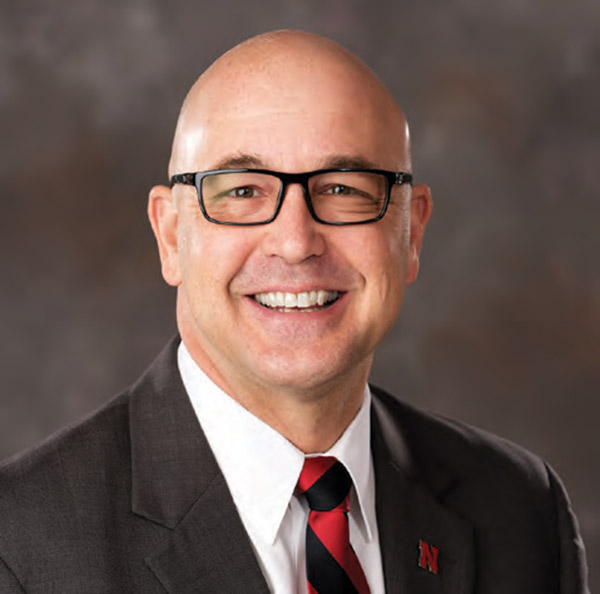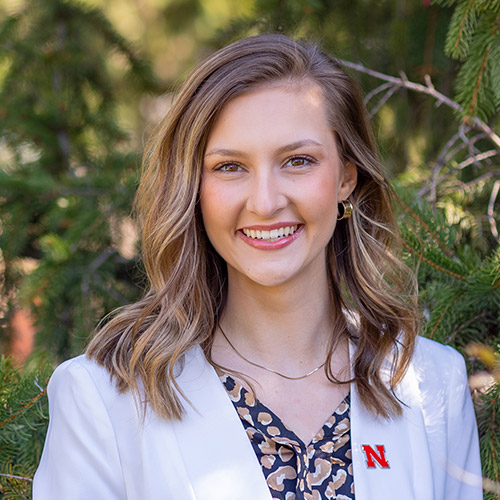
Fighting for Healthy Humans in a Growing World
IANR Intentionally Focuses on a Healthier Tomorrow

The Institute of Agriculture and Natural Resources (IANR) has a mission to sustainably produce food, fuel, feed and fiber for the growing world in a way that provides a high quality-of-life for those engaged in agriculture. This mission rattles with deeper importance as world population numbers are expected to jump from 7.5 billion to approximately 9 billion by the year 2050.
“Every day, IANR is putting together a wickedly complex puzzle, in which each faculty member, researcher, Extension educator, student, staff member, partner and stakeholder is a vitally important piece,” said Michael J. Boehm, University of Nebraska Vice President for Agriculture and Natural Resources and Harlan Vice Chancellor of IANR at the University of Nebraska–Lincoln. “As the pieces come together, we see a picture of the world in which IANR is making a meaningful difference in sustainable food, fuel, feed and fiber production.”
Each year, Strategic Discussions for Nebraska (SDN) provides a snapshot of ways IANR makes a difference by focusing on one specific community area – and in 2021, the community focus is Healthy Humans.
“This edition of SDN paints the big picture of a collection of work being done in IANR connecting health to multiple areas,” Boehm said.
This edition also serves as a connector to other areas within the University of Nebraska system, Boehm said. For example, researchers in the Food for Health Center are working to harness the gut microbiome and better understand how the food we eat influences the gut microbiome as well as how the gut microbiome breaks down food. This work is a natural bridge to the University of Nebraska Medical Center (UNMC), where researchers are working to understand diseases connected to similar issues.
Healthy Humans Impact
Innovative, world-class research is discussed and highlighted in SDN, Boehm said. Ranging from community health to individual nutrition, to food security, health disparities, and mental well-being, the work showcased in this SDN edition has a critical impact not only on Nebraskans and their overall health, but on the world.
“This chapter in SDN history, and in the story of healthy humans, will be boundary-expanding on many fronts,” Boehm said.
The 2021 edition of SDN highlights these projects. For instance, Dipti Dev, associate professor in the Department of Child, Youth, and Family Studies, offers a series of on-demand, online modules with short videos to demonstrate science-based strategies for establishing healthy eating patterns with children, in order to prevent health issues later in life.
Virginia Chaidez, associate professor in the Department of Nutrition and Health Sciences, works to achieve health equity and eliminate health disparities in Nebraska through community-based research.
Kaustav Majumder, assistant professor in the Department of Food Science and Technology and researcher in the Nebraska Food for Health Center, investigates how food proteins and peptides impact human health depending on how food is harvested from the field, processed in a food processing facility, and prepared in the kitchen.
Finally, Richard Wilson, professor in the Department of Plant Pathology, studies rice blast, a plant-pathogenetic fungal disease that significantly impacts rice production, with the goal of reducing rice blast developments on the rice plant ultimately ensuring global food security.
“These projects are the next generation of research that will propel Nebraska forward, and that we will continue to build on into the future,” Boehm said. “IANR needs all perspectives and all approaches to drive real impacts.”
Agriculture is more than cows and plows, as it really does touch and permeate lives in so many ways, Boehm said. The interconnected story of IANR showcased in SDN shows a glimpse of the diversity of research and projects currently underway at the university.
Communities of Discovery and Practice
IANR is a complex system where focused communities contribute to different efforts, including human health, science literacy, economic vitality, etc., Boehm said.
These communities connect and work together, but also function independently. Having different perspectives to solve current global issues, such as food insecurity and poor water quality, is the essential piece that ensures IANR is doing its best to sustain efforts.
Faculty and staff of IANR conduct extensive research and projects under specific communities, known as the six IANR communities of discovery and practice:
- Computational Sciences
- Drivers of Economic Vitality for Nebraska
- Healthy Humans
- Healthy Systems for Agriculture Production and Natural Resources
- Science Literacy
- Stress Biology
The six communities were established in 2011 after considering faculty and staff engagements with Nebraska citizens and beyond.
“Through these six communities, IANR leaves a positive footprint on the state of Nebraska and, at times, even the world,” Boehm said.
Annual performance evaluations and processes allow for faculty, staff and students to share what they have accomplished in the areas of the six communities. Many of those accomplishments unfold in the stories of this publication.
“SDN gives us a snapshot of a broader window about what IANR is doing to make a difference in the six IANR communities of discovery and practice,” Boehm said.
For more information on IANR, visit ianr.unl.edu.